
The nearer a man comes to a calm mind, the closer he is to strength.
Marcus Aurelius
“I’ll Find My Way Home” by Jon & Vangelis (courtesy of Jon Anderson Official):
The differences between 20th-century inventions and those of the preceding thousands of years are connected with the profound changes that have occurred in people’s mentalities. From the Industrial Revolution until around 1960, scientists, technicians, inventors, and the public all entertained the conviction, that science and technology were always at the service of man and of society. Inventions, all inventions, could therefore be beneficial to humanity, including the invention of nuclear fission, which could provide cheap energy. As it turned out, the technological packages which were exported to the developing countries, did not produce the expected benefits or rarely benefited the whole population.
The Aswan Dam below caused unexpected environmental problems.

And finally, the undeniably troubling feature is the unpredictability of science. We can see it in the case of finding a solution to certain problems like cancer, where it is still obvious that it is fate which calls the tune. The discovery that some genes are linked to various types of cancer leads to a change in research direction – it would have to be a correction of the defective gene. Let us look to the future in hope, what wonderful discovery could be just around the corner.

JUAN DE LA CIERVA
21 September 1895 – 9 December 1935
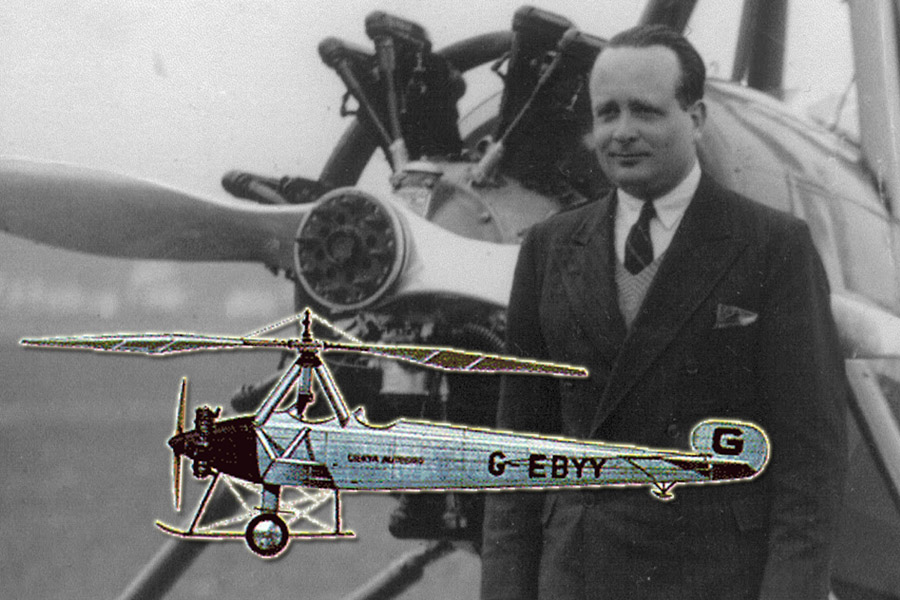
A strange aircraft took to the air in 1923. It was the autogyro, an aeroplane with both a propeller and a rotor, invented by a Spanish engineer, Juan de la Cierva. Today, the autogyro is only flown by enthusiasts, having been superseded by the more manoeuvrable helicopter. The most important feature of helicopter design, however, which are the complicated mechanics at the hub of the rotor, was established in Cierva’s autogyros.
Courtesy of NBC News:
“You Only Live Twice” by John Barry (courtesy of Mother of Sorrows):
Murcia, Spain

Courtesy of Михаил Шварц ispaniagid ru:
The estate of Juan de la Cierva in Santo Angel, Murcia

“Recuerdos de la Alhambra” by Francisco Tárrega, performed by John Williams:
Juan de la Cierva was born to a wealthy family in Murcia, Spain. As a boy, he was inspired by the early pioneers of flight, and he became determined to be an aviator himself. In 1911, he went to study civil engineering in Madrid.
University in Madrid

That year, he and two friends experimented with gliders and formed an aviation company. In 1912, Cierva built the first aeroplane in Spain, but during the following few years, two of his aeroplanes crashed after stalling at low speed.
Madrid, Spain

Courtesy of expediasea:
As a result, he became determined to build an aeroplane that could not stall. He came up with the autogyro: an aeroplane with a propeller at the front and rotating wings – rotor blades – at the top. The rotor blades would always be moving fast relative to the air and producing a lift, even when the autogyro was moving slowly.

Other inventors had experimented with rotors as early as 1907, but with little success. Cierva decided to leave his rotors unpowered so that they would windmill or ‘autorotate’ as the autogyro moved through the air. This approach had added benefit: if the engine cut out, the autogyro would not crash to the ground. Instead, it would fall slowly, like a spinning sycamore seed case. In 1920, Cierva patented his idea, and tested small models of his autogyro concept. The models worked well, but when he scaled his design, he found it had a tendency to flip over. He soon realised why. As it turns, each rotor blade spends half the time moving forwards – into the oncoming air – and half the time moving backwards. This means that the advancing blade is moving through the air faster than the receding blade and so the lift force is greater on one side than the other.

Cierva looked back at his earlier models, and realised that the smaller rotor blades were flexible. As those rotors turned, the blades twisted slightly, automatically adjusting to the changing airspeed during each rotation, and producing constant lift. Cierva set about mimicking this phenomenon in his larger, metal blades. To do this, he incorporated a ‘flapping hinge’ where each rotor blade met the rotor hub.
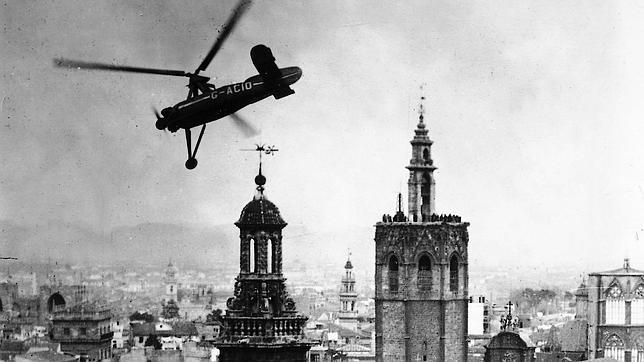
In January 1923, Cierva’s first successful prototype, the C4, flew 180 metres (200 yards) at an airfield near Madrid. This was the first stable flight of a rotating-wing aircraft in history, and was quickly followed by many longer, more sustained flights. In 1925, Cierva demonstrated autogyro C6 in England and, with the support of an investor, formed the Cierva Autogiro Company. Three years later, Cierva flew his C8 autogyro from England to France. The C8 featured a ‘fully’ articulated rotor’, with blades that could flex backwards to absorb the drag force (air resistance), which had previously caused some blades to snap.
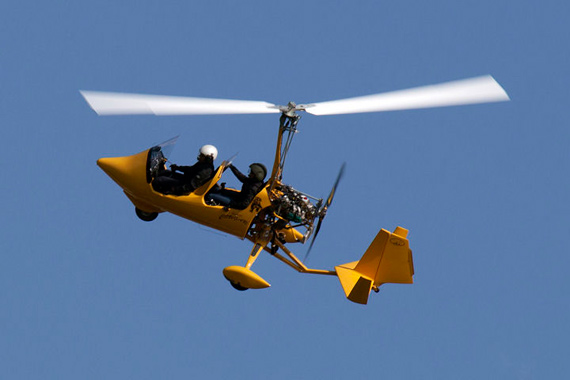
More improvements followed, including a system to drive the rotor, just at take-off, so that the autogyro could rise vertically. The most obvious change came in 1933, when Cierva built autogyros with no wings and no tail. Up to this point, autogyros were controlled in the same way as fixed-wing aircraft: using moveable flaps on the wings and tail. This meant that the pilot all but lost control at low speeds, so Cierva decided to find a way to control his autogyros by tilting the rotor. To do this, he had to design a complicated system of hinges and control levers around his rotor hub, and what he achieved formed the basis of all future helicopter rotors.
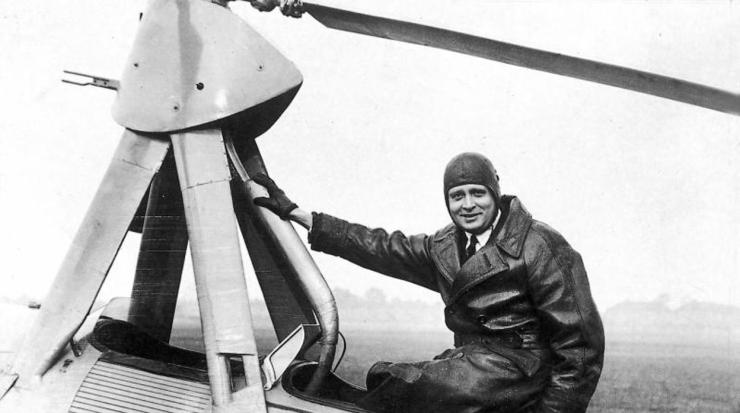
Ironically, after devoting his career to avoiding the problems of stalling, Cierva was killed at Croydon airport, London, a passenger aboard a conventional fixed-wing aeroplane that stalled and crashed into a building just after take-off.

A monument to Juan de la Cierva
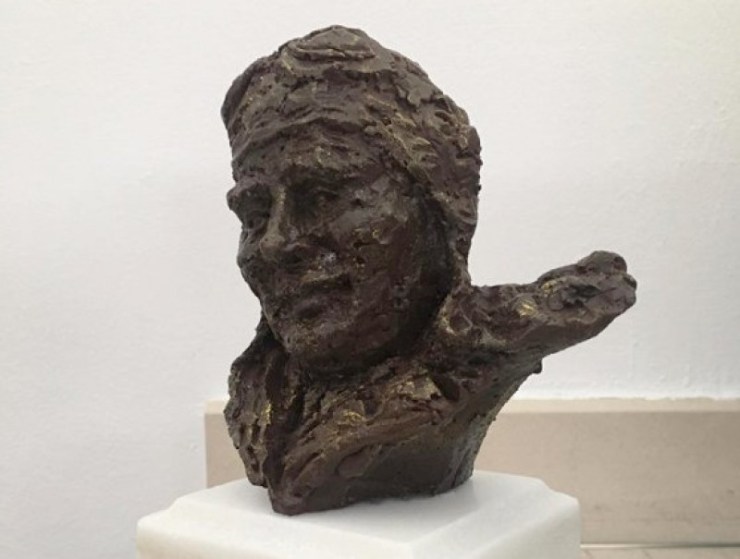
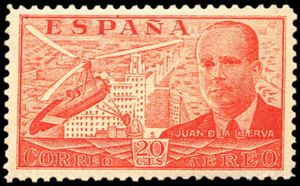
“Hidden Forces” by Richard Harvey:
A Focke-Wulf Fw-61, the first fully controllable helicopter, first flew in 1937. A German engineer Heinrich Focke (1890-1979) designed this after working on Cierva autogyros. The pilot was German aviator Hanna Reitsch (1912-1979), who set many records, including being the first woman to fly helicopters.

The autogyro invented by Juan de la Cierva and later developed by Russian engineer Igor Bensen ( 1917-2000) was effective, safe, and moved through the air almost as fast as some aeroplanes. Autogyros found several uses during the Second World War, including reconnaissance and even the bombing of submarines. But autogyros could not hover or perform truly vertical landings and take-offs so eventually helicopters gained the edge once they become practical.


Above is Bensen flying his helicopters
It was the Russian-American aviation pioneer Igor Sikorsky (1889-1972) who established the blueprint for the modern helicopter. Sikorsky built his first helicopter in 1909 but as with other inventors’ attempts at the time, it did not work. After working on fixed-wing aircraft during the 1910s and 1920s, Sikorsky eventually produced one of the world’s first successful helicopters, the VS-300, in 1939. He went on to design the first mass-produced helicopter, the Sikorsky R-4, in 1942. The overall layout of most helicopters has changed little since then.
Courtesy of CBS Sunday Morning:
Below: Igor Sikorsky flying his VS-300 helicopter.
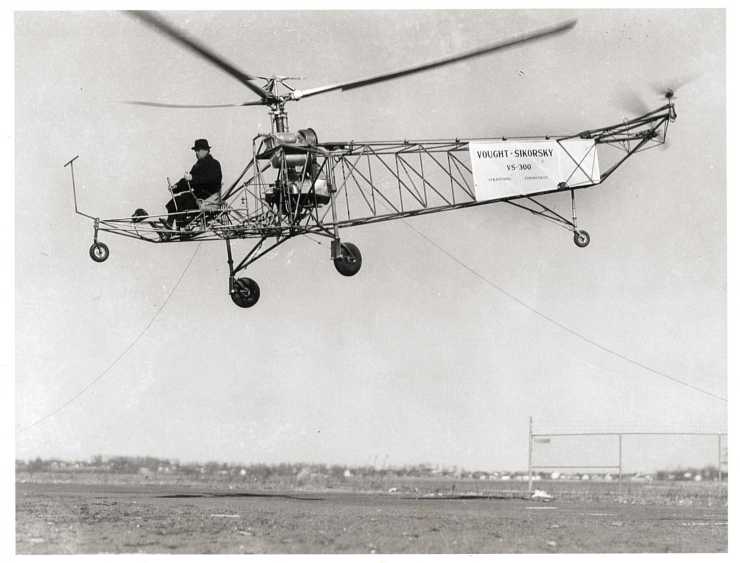
It was the first helicopter to have a tail rotor; until then, helicopters had two counter-rotating main rotors to keep them stable in flight. Both designs are still common today.
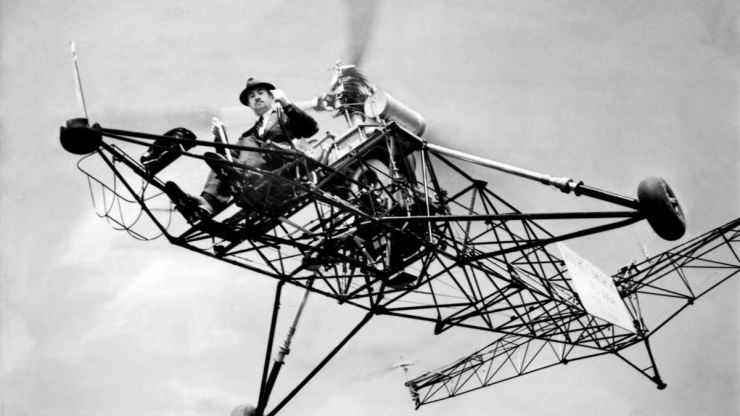
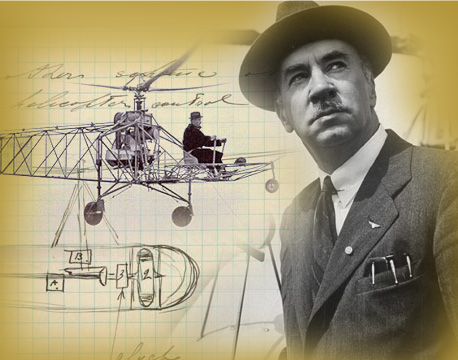
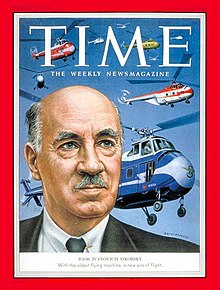
After writing all this, I can only say – I would rather have any old bus, please!
GERTRUDE ELION
23 January 1918 – 21 February 1999

The inventions of the American biochemist Gertrude Elion are far too small to see. They are works of engineering but at the molecular level: Elion was a pioneer of chemotherapy, the medicines she developed have brought hope to millions of people with bacterial and viral infections and cancer.
Times Square, vintage New York

“Empire State of Mind” by Alicia Keys (courtesy of Byron Calatt):
Gertrude Elion was born in New York, USA. Her mother was from Russia, her father from Lithuania. As a child, ‘Trudy’ had an insatiable desire to read and learn, and she took an interest in all subjects. It was the fact that her grandfather had died of leukaemia that fostered her interest in science. At the age of 15, she began studying chemistry at Hunter College, New York, in the hope that she might one day develop medicines to cure or prevent the disease that had claimed her grandfather.

The campus at Hunter College was for women only, so Elion was used to women studying science. However, in the world outside college, men still dominated, and despite her outstanding academic record, Elion found it impossible to get funding to take on a PhD. By doing several poorly paid jobs, she managed to save up enough money to enrol at night school, and she received a masters degree in 1941, but never received a PhD. That year, many men were out of the country fighting on the Second World War, so some laboratories were employing women.

In 1944, after several years of working in unchallenging jobs in the chemical industry, Elion began work as a senior research chemist in the New York laboratory of the pharmaceuticals company Burroughs Wellcome.
Burroughs Wellcome, New York
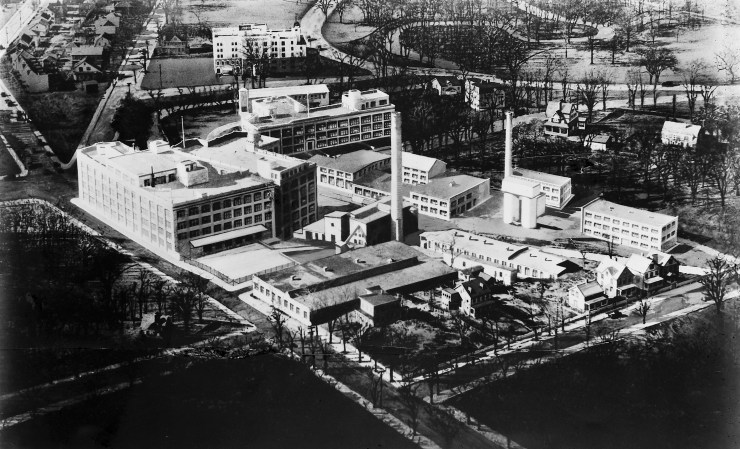
There she worked as an assistant to an American doctor and chemist George Hitchings (1905-1998), who encouraged her to learn as much as possible and to follow her own lines of enquiry.

Courtesy of SciShow:
Although Elion had studied chemistry, her quest to produce medicines had led her to biochemistry (the chemistry of living things), pharmacology (the study of how drugs work), and virology (the study of viruses). By the 1940s, biochemists had discovered that a chemical called DNA (deoxyribonucleic acid) present in the cell nucleus was involved in cell replication. They had worked out the constituent part of DNA, but its double helix structure would not be worked out until 1953.
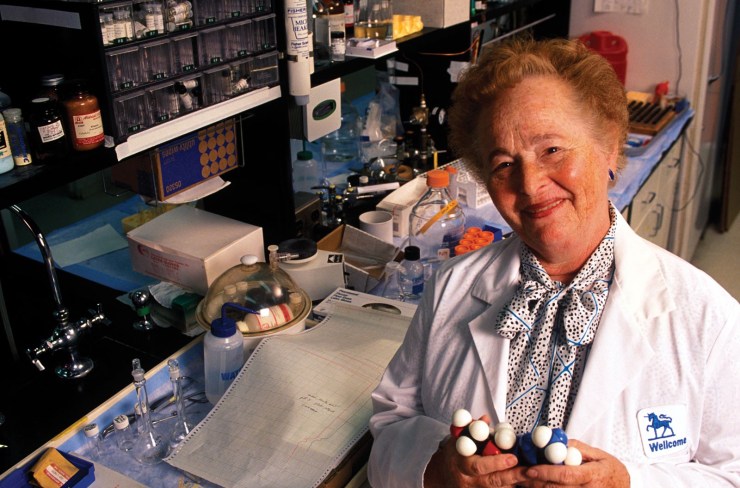
The most important constituents are small molecules called purines and pyrimidines, which join together in pairs along the length of the much larger DNA molecule. Elion wondered whether altering these molecules might somehow confuse a virus or bacterium or stop the uncontrolled reproduction of cancer cells. She and Hitchings set about engineering new ones.
3D model of 6-Mercaptopurine
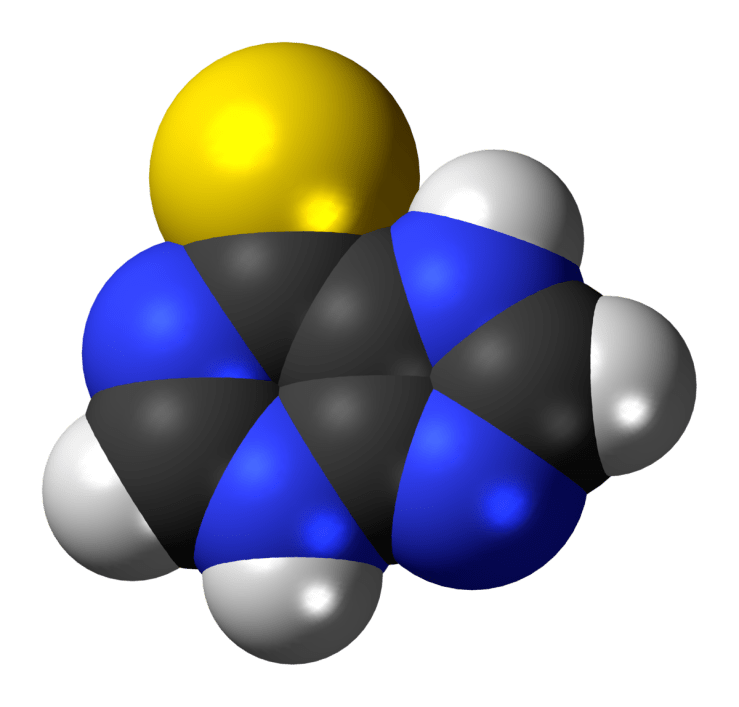
Elion and Hitchings made their first breakthrough in 1948. One of their purines, 2,6-diaminopurine, was found to restrict the reproduction of bacteria and to slow the growth of tumours in mice. Over the next few years, Elion tested more than 100 other engineered purines. In 1951, trials suggested that one of them, 6-mercaptopurine (6-MP), could fight leukaemia. At the time, there was little hope for patients with leukaemia, most of whom were children and most of whom died within a few months of diagnosis. When 6-MP was tested on humans, it was found to increase life expectancy and some children even went into full remission. The drug is still used today in anti-cancer chemotherapy.
The effects of Malaria

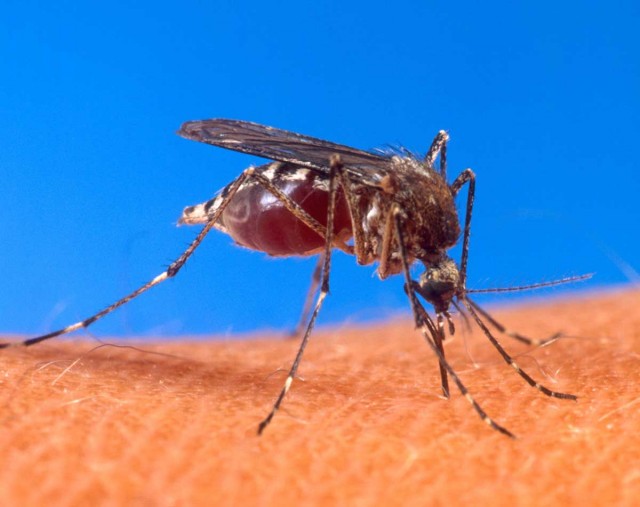
With increasing knowledge of biochemical reactions at the heart of cell biology, Elion went on to synthesise several medicines effective against a range of bacterial diseases, including malaria, meningitis and septicaemia. In 1958, she produced the first medicine that could suppress the immune system, making organ transplants safer. Since the development of immunosuppressive drugs – such as azathioprine, developed by Elion – there was no need for the donor and recipient to be related to avoid rejection of the organ by the recipient’s body.
A meningitis victim
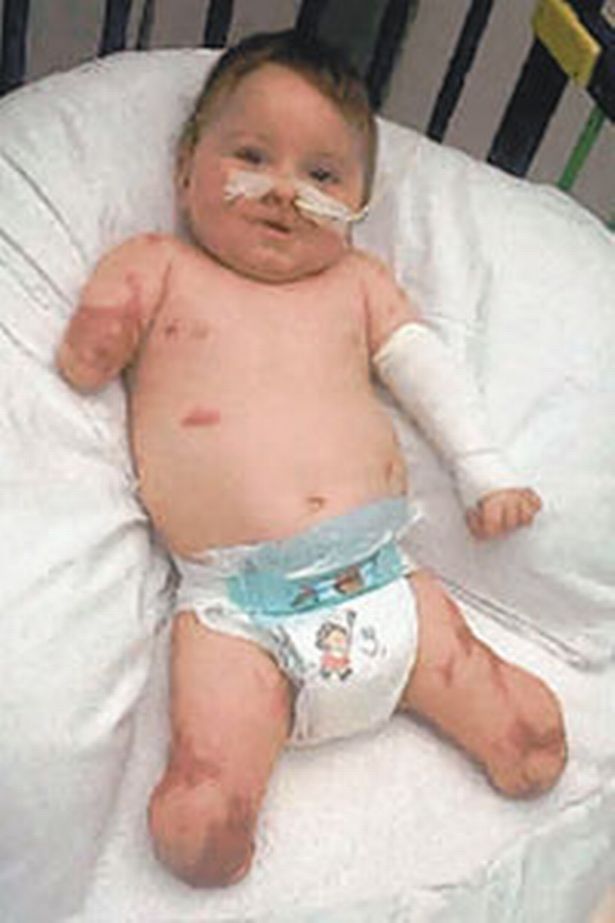
In 1981, after more than a decade’s work, she created the first anti-viral drug, acyclovir, which is the active substance in anti-herpes medicine such as Zovirax and Valtrex. Gertrude Elion received many awards for her groundbreaking work in chemotherapy, including, in 1988, the Nobel Prize in Physiology or Medicine. She shared the prize with George Hitchings and Scottish pharmacologist James Black for ‘discoveries of important principles for drug treatment.’ She commented, “The Nobel Prize is fine, but the drugs I’ve developed are rewards in themselves.”
Gertrude Elion surrounded by all the other Nobel prize winners that year
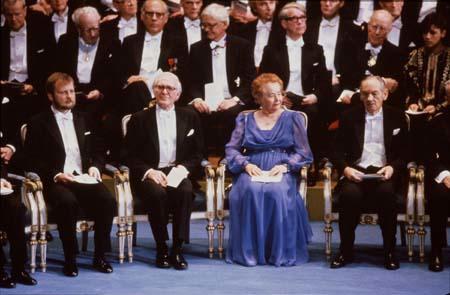
Herpes simplex virus

In 1958, an American doctor William Dameshek (1900-1969) suggested that Gertrude Elion’s anti-leukaemia drug 6-MP might be effective at suppressing the immune system. Damashek’s rationale was that the white blood cells responsible for the immune response were similar to the white blood cells involved in leukaemia.
“The Wildflower Meadow” from “The Highgrove Suite” by Patrick Hawes, performed by Claire Jones and Philharmonia Orchestra:
Professor Sir Roy Calne

In 1960, the English transplant pioneer Roy Calne tested 6-MP and found it to be effective. Gertrude Elion suggested that the related compound azathioprine might be more effective, and Calne conducted promising trials with the new drug in 1961. The first successful kidney transplant between unrelated humans was performed soon after, using azathioprine in combination with corticosteroids. This drug became the mainstay of transplant surgery until it was replaced by a more powerful drug, cyclosporine, in 1978.
I have written about Gertrude Elion not only because she was an inventor in her own right but because previously all the geniuses I wrote about were men. It was important to include here the women who through their ability helped to change our world for the better. I have to mention also Marie Curie who received two Nobel Prizes for her work in radiation, and discovered polonium and radium, and Rosalind Franklin, who died before her work was acknowledged by the Nobel Prize committee as the rules do not permit the prize to be awarded posthumously. As she worked with Watson and Crick as a team, they did receive the Nobel Prize award.
Courtesy of Ted-Ed:
Marie Curie

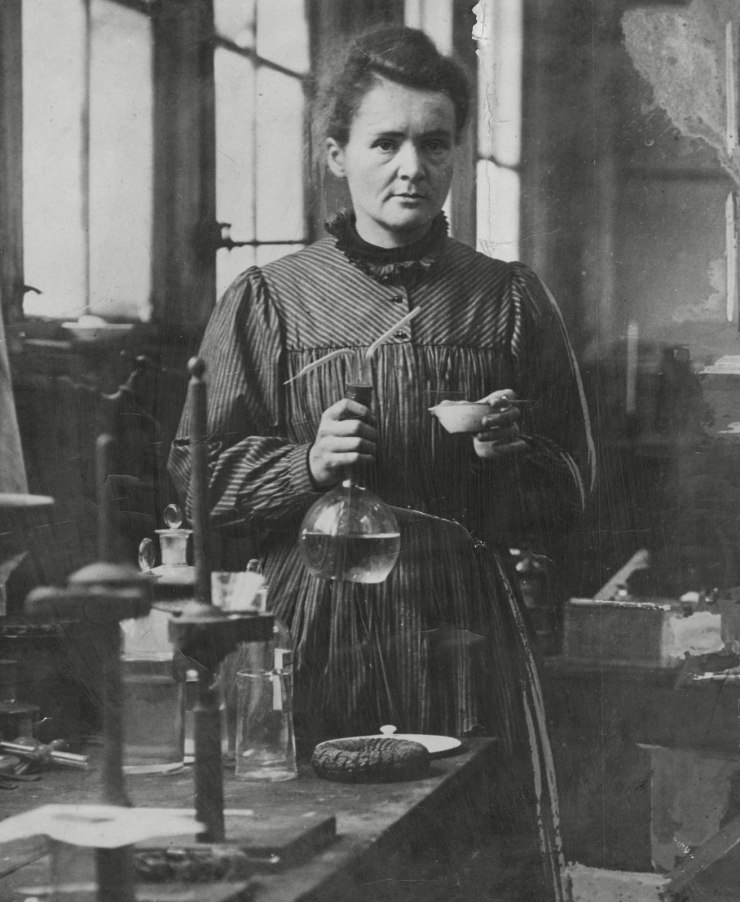
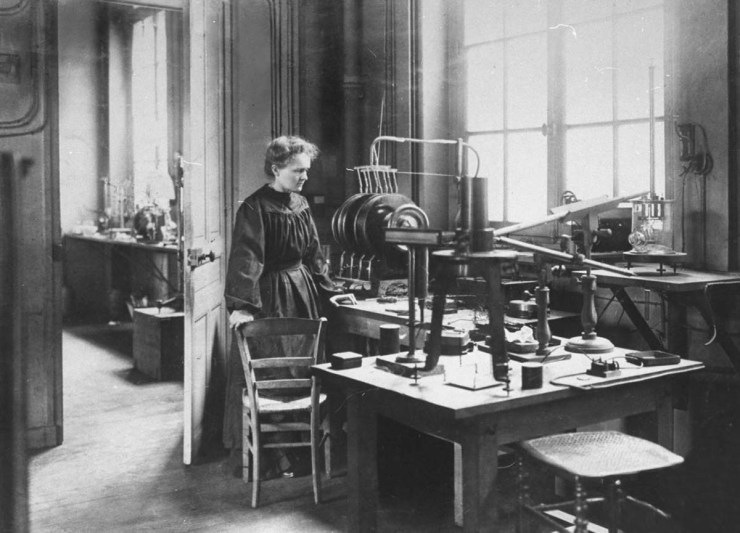
Courtesy of TED-Ed:
Rosalind Franklin
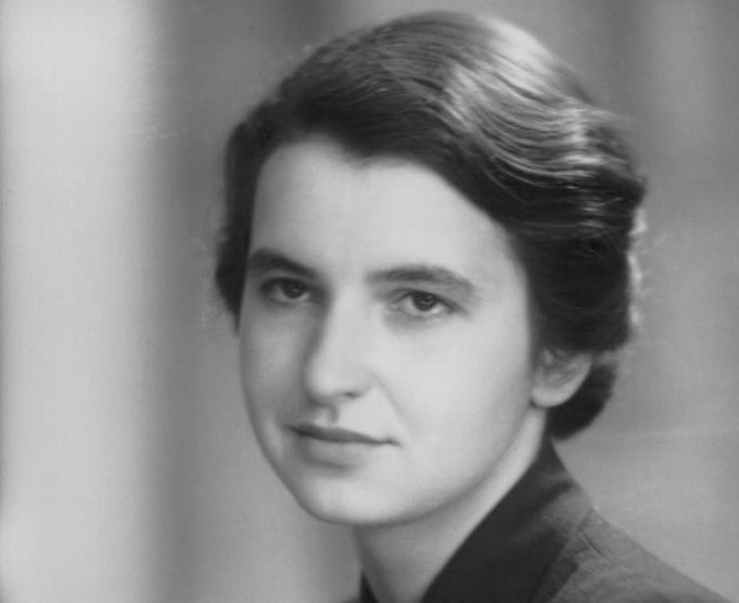

Francis Crick and James Watson and the model of the structure of DNA

Courtesy of Fast Company:

Fascinating, Joanna. Thank you for not forgetting the ladies. 😉
LikeLiked by 3 people
Thank you, Pat, for your kind comment.
Including the women- inventors was a must!
Joanna
LikeLiked by 2 people
Good job. All of your essays about inventors and researchers are fascinating. These people were amazing.
LikeLiked by 2 people
Such an amazing amount of work in your fascinating posts. And always the lovely music. Thank you once again Joanna.
LikeLiked by 3 people
Thank you, Carolyn, for your kind comments! I am glad that you like the music as I like your squeaking delightful friends!
Thank you again, greatly appreciated!
Joanna
LikeLike
Thank you for your kind comments, Neil. Clever and inventive people have a passion that drives them, and with the alarming climate changes, we need them more every day!
Joanna
LikeLiked by 1 person
Great post! All of your essays , not only those about inventors and researchers, are so interesting!
LikeLiked by 3 people
Thank you, Luisa, for your wonderful comments! It is so rewarding that someone as erudite as you reads my other posts and finds them interesting!
Joanna
LikeLiked by 1 person
It was all my pleasure to express my views on your wonderful posts!
LikeLike
Thank you, Joanna for this post, (I was anxiously waiting for this) that highlights the genesis of inventions of autogyro and chemotherapy that have added to our convenience and better medicare. The roles of Cierva, Igor Bensen and Focke as also of Elion and Hitchings cannot be forgotten, though we may or may not recognise their had work and sacrifices. The death of Cierva is one example. The other is of Marie Curie, who got Nobel prizes for her work in radiation, but died due to exposure to radiation itself.
I like the very beginning of this post when you state that inventions were at service of man and society. It’s a different fact that we have become servile to these inventions, e.g. mobile phones. It all depends on the usage, e.g. nuclear fission. The impact may also be unexpected one. Aswan dam, as you have rightly mentioned, was built to regulate flooding and increase agri production, but it reduced the fertility of lands.
Your pictures, videos and music are as usual awesome, but I liked You Only Live Twice, though I believe in YOLO, as I have to live this life for myself, my dreams and aspirations all put together. Who has seen tomorrow, and the next life? Thank you, Joanna, once again, for your sincere and consistent efforts put in to publish one more interesting and informative post.
LikeLiked by 4 people
Thank you, Kaushal, for your as always wonderful and detailed comments! I write about these posts as a tribute to those who lived before us. There are new inventions happening while I am typing this, more to find ways to combat cancer by developing immunotherapy in a certain type of cancer, and the drug called dostarlimah has been successful.
Thank you again, Kaushal, it was my great pleasure to publish the scientific facts.
Joanna
LikeLiked by 3 people
You’re welcome, Joanna and you’re so right! Scientists are working day in, day out for the betterment. I think dostarlimab has also been approved by FDA. Any breakthrough in cancer therapy will be a boon to humankind. Thank you.
LikeLike
Thank you!
LikeLiked by 1 person
Quite interesting, Joanna. I agree, I’d rather get on a bus! I, too, appreciate your mentioning our brilliant ladies. Thanks for sharing your efforts and time. 🌞
LikeLiked by 3 people
Thank you, Lisa, for your kind comments. Writing about science is a pleasure, and I am glad that you liked it.
Joanna
LikeLiked by 1 person
Thanks for sharing this about these inventors .
Anita
LikeLiked by 2 people
Thank you, Anita, for your kind comments. Greatly appreciated!
Joanna
LikeLike
What an informative and interesting post this week Joanna. Brilliantly researched as always. Thank you.
LikeLiked by 3 people
Thank you, Peter, for your wonderful comments! Greatly appreciated!
Joanna
LikeLiked by 1 person
Thank you for this interesting piece on discoveries and inventions, Joanna. Love the segment on these amazing ladies. Fabulous pictures and videos. Just wonderful 💕
LikeLiked by 3 people
All these people have given so much to the human race, and yet some are virtually unknown. How unfair is it though that somebody who spends their life trying to improve aircraft safety dies in a passenger plane crash! Another exceptional post Joanna, as all your posts are.
LikeLiked by 2 people
Thank you, Malc, for your wonderful comments! Life is unfair, that is a part of the mystery. Your words are much appreciated!
Joanna
LikeLiked by 1 person
You are truly amazing, Joanna, gathering these information to share with us. 😉
LikeLiked by 2 people
Thank you, Adelheid, for your wonderful comment! It made my day, and it is truly appreciated!
Joanna
LikeLiked by 1 person
Always a pleasure, Joanna!
LikeLike
Thank you!
LikeLiked by 1 person
Great and informative post Joanna. It was especially lovely to read about the women who helped to change our world for the better.
LikeLiked by 1 person
Thank you, Henrietta, for your kind comments. I thought it was important to
Include the women of science too.
Thank you again.
Joanna
LikeLiked by 1 person
Thanks Joanna, for another amazing post. 🌹🙋♂️ I’m glad you included ladies because it reminded me of someone born not far from where I grew up: Jocelyn Bell Burnell. Here’s a link:
https://en.wikipedia.org/wiki/Jocelyn_Bell_Burnell
LikeLiked by 1 person
Thank you, Ashley, for your fascinating comments and the information about Jocelyn Bell Burnell, and especially for the link about her achievements, life, and awards. I have made notes and will use them in the future. Thank you again, Ashlyn!
Joanna
LikeLiked by 1 person
Thanks, Joanna – I’ve learnt a lot from your post! Fascinating and admirable! But it’s also true that while many scientists are driven by the urge to help people, but sometimes achieve the reverse.
LikeLiked by 1 person
Thank you for your kind comments. All greatly appreciated.
Joanna
LikeLike
When you research her life you will of course note that a male colleague was awarded the Nobel Prize for the discovery! Joanna, I’m incensed by things like this, but JBBs religious beliefs (Quaker) probably stopped her from “complaining”. She was recently in Northern Ireland at a girls school encouraging young girls there to achieve their goals. I am profoundly moved by her quiet determination! 🙏
LikeLike
I was outraged as well, Ashley, but this happened to many female scientists, that is why I included the one I could.
Thank you again for the link!
Joanna
LikeLiked by 1 person
I finally got a chance to read and digest your incredible post as a passenger in my long car ride to see my son. My husband enjoyed hearing your music and great discoveries that are so wonderful to hear about. We keep making more discoveries in healing. Here’s to you for your time, energy, dedication and the woman you pay tribute to.
Thanks so much for an inspiring post. It was worth waiting for-:)💕❤️🌹💕❤️
LikeLiked by 1 person
Thank you, Cindy, for your wonderful comments! I tried yesterday to leave a congratulation message on your website but it was so hot here that my laptop would not work. Your achievements, Cindy, are well deserved. Thank you again. Your words are greatly appreciated.
Joanna
LikeLike
NICE CONTENT ❤️
LikeLike
Thank you for your kind comment.
Joanna
LikeLike
Great writing, simple n detailed, as always great image selection.
Great article on women’s contribution to science. From the image, I could only recognize Marie Curie.
LikeLike
Thank you, Nitin, for your kind comments. I wanted to include the women scientists because they were often ignored.
Thank you again, greatly appreciated.
Joanna
LikeLike
i read a book at the time of Corona outbreak, Beyond Love. The author of this book is Dominique Lapierre. This book is about the struggle of doctors for humanity
I remembered this book while reading your article.
LikeLike
Thank you, Nitin, I will try to get the book, sounds interesting.
Joanna
LikeLike
Thank you, Nitin, for the title, I will try to get it, as it is interesting.
Joanna
LikeLike
A fascinating post, Joanna! I enjoyed learning about the development of planes and helicopters. I especially enjoyed reading about the amazing achievements of women in science. Thank you for highlighting them. And thank you for the tremendous research, effort, and creativity that goes into anything you post. I always know I will both learn and enjoy. ❤
LikeLike
Thank you, Cheryl, for your wonderful comments! I am elated reading your words of praise! Greatly appreciated!
Joanna
LikeLike
Just think, if historically women and other less appreciated individuals had the same opportunity and appreciation as men, how many more numerous advancements might exist. And if males were responsible for growing, birthing, nursing and rearing young would the statistics be reversed? Would the destruction of wars be less?
Who said that the Y chromosome exclusively gifted brains, curiosity or creativity? (Or music, art or writing?) All contributions, including from youth, are needed in all areas for a good outcome for future earth. Thank you, Joanna, for a balanced, detailed and musically accompanied post.
Stewart
LikeLike